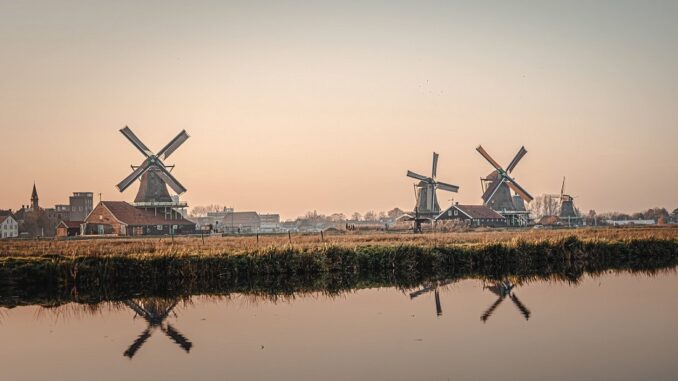
It must be an age thing – but to me there is not much difference between a windmill and a wind turbine.
So it’s a good job I had 13-year-old Flossie on hand to put me right. A school trip to see the biggest windfarm in Scotland had put her in good stead for a visit to Zaanse Schans, home to some real beauties.
According to Flossie (and her brother Ruaridh (15) agreed), only old people get mixed up as a there is a huge difference in use and technology, with a windmill, an old-fashioned source of energy to mill grains into flour and a wind turbine, a more modern invention to create power.
But I was right when I said both need wind to move. And after seeing the mightily impressive skyline in front of our Dutch hotel, I am firmly in the windmill camp. The Boutique Hotel is smart and has all the mod cons you would wish for, along with a fine traditional dining room where an ample breakfast is served.
Just 15 minutes out of wonderful Amsterdam and you find yourself in the beautiful and very upmarket suburb of Zaandijk, home to just over 8,000 people. Sitting on the banks of the River Zaan, the houses are wooden fronted and oozing with chocolate box cuteness and they form part of a village dominated by windmills dating back to the 18th and 19th centuries, which were used to grind spices, flour and pigments.
Now a working museum, you can spend a few hours gazing at the beauty of the simple windmills, enjoy watching and buying home-made handicrafts, download an app to allow you to walk or cycle around the beautiful scenery which winds its way around the museum or even take a ride on an old cattle boat down the river. There is also a windmillhopper boat which lets you weave in and out of the windmills while you listen to a history of these classic beauties.
The Zaans Museum opened in 1988 to protect the heritage of the area and in the middle is The Verkade Experience where you can imagine yourself in a 20th century chocolate and biscuit factory. The delicious smells which are in the air as you arrive, are certainly an incentive to visit! The area is so beautiful that French painter Claude Monet visited in 1871 and produced 25 creations in its honour.
Once you can tear yourself away from the windmills, a quick hop on the train and you are in downtown Amsterdam and enjoying the delights of this lovely city.
Investing in an I amsterdam City Card means your transport is covered. You have access to 70 top museums and activities and a chance to enjoy a cruise along the canals or hop on a bike and cycle around.

The beauty of this fine city is that it is so compact and if like us, you are only there for a short time, it is easy to fill your days.
After enjoying the outdoors of the windmills, it was time for some culture indoors and a visit to the Rijksmuseum and The Van Gogh Collection. Like most museums in Amsterdam, you need to book a time slot before visiting, helping cut down on waiting times.
With floors groaning with master pieces by Rembrandt, Frans Hals and Van Gogh, the Netherlands’ most famous artists, you are spoilt for choice. Until January, there is an exhibition called Clara and Crawly Creatures, featuring wiggly ants, hairy spiders and colourful butterflies, as well as the infamous rhinoceros.
The Van Gogh Museum is dedicated to the great man’s works from The Sunflowers to The Potato Eaters and at the moment there is an exhibition of photographs and charcoal drawings by Marcel van Eeden, inspired by Van Gogh’s drawing, Gasworks. Also for fans of Vienna’s golden boy, Gustav Klimt, there is a collection dedicated to his works, including the life sized reproduction of the Beethoven Frieze.
As well as the painters, Amsterdam was home for teenager Anne Frank, who with her family, was forced into hiding in 1942 to escape Nazi Germany’s targeting of Jewish people during World War II.
During her time hidden in a secret annex of her father’s work’s building, Anne wrote a diary of her days and this was found years later by her father Otto after he became the only survivor of the concentration camps, the family was sent to.
The powerful diary was published in 1947 and in 1960, the building the family hid in, became a museum in her honour.
Today, you can tour with an audio guide and hear the family’s struggle for survival and see the building and secret annex as it was when they lived there.
The museum and art galleries are only a tiny drop in the sea of opportunities Amsterdam has to offer to visitors and neighbourhoods like windmill’s Zaandijk, offer a peek into the historical past and the “greener” present.
For more information on Amsterdam and surrounding neighbourhoods, please visit: https://www.iamsterdam.com/en.
Author Bio:
Rebecca Hay is an experienced travel writer and member of The British Guild of Travel Writers. Follow her adventures with her family on Twitter and Instagram @emojiadventurer and on Facebook via EmojiAdventurers2.


Be the first to comment